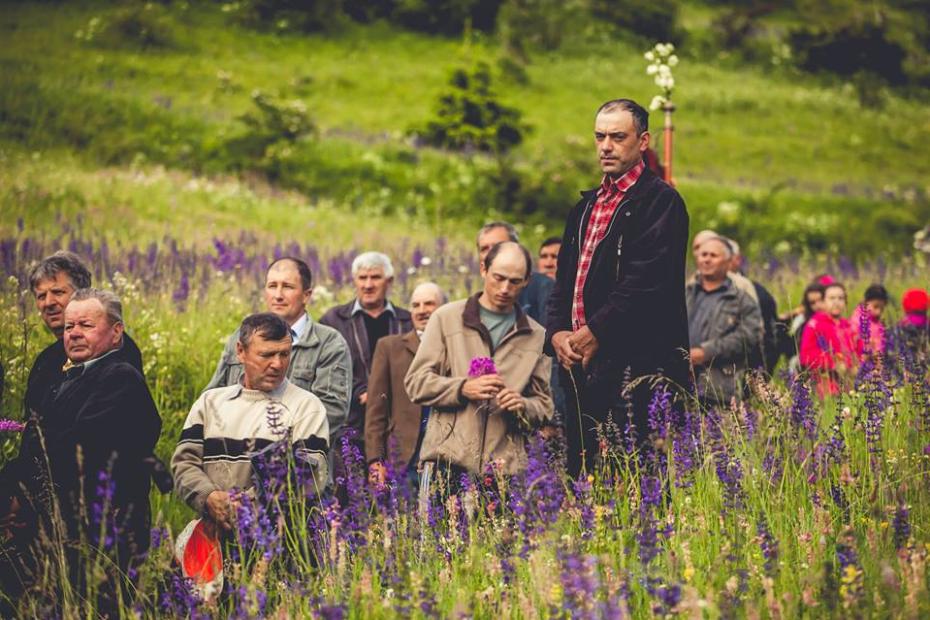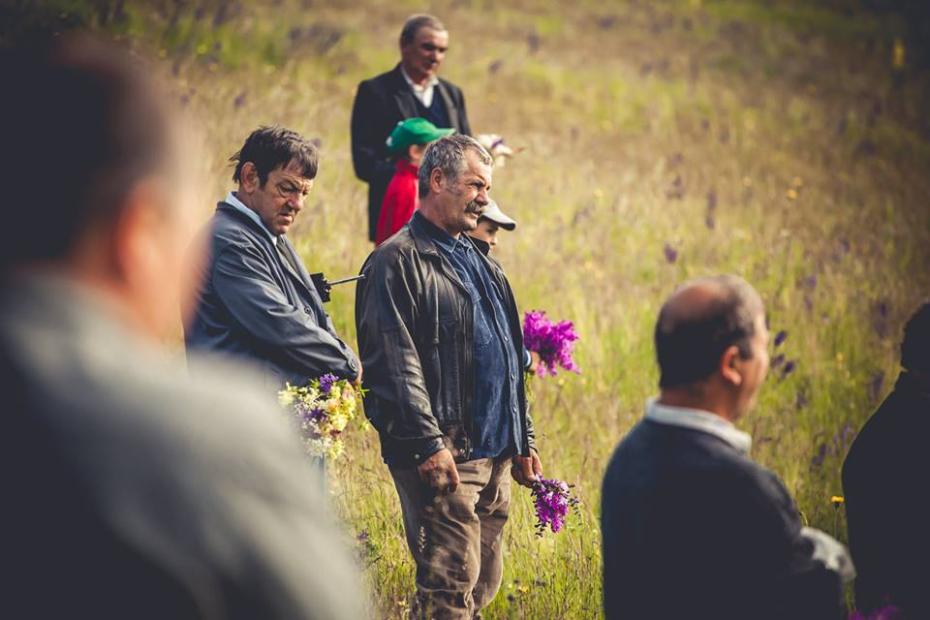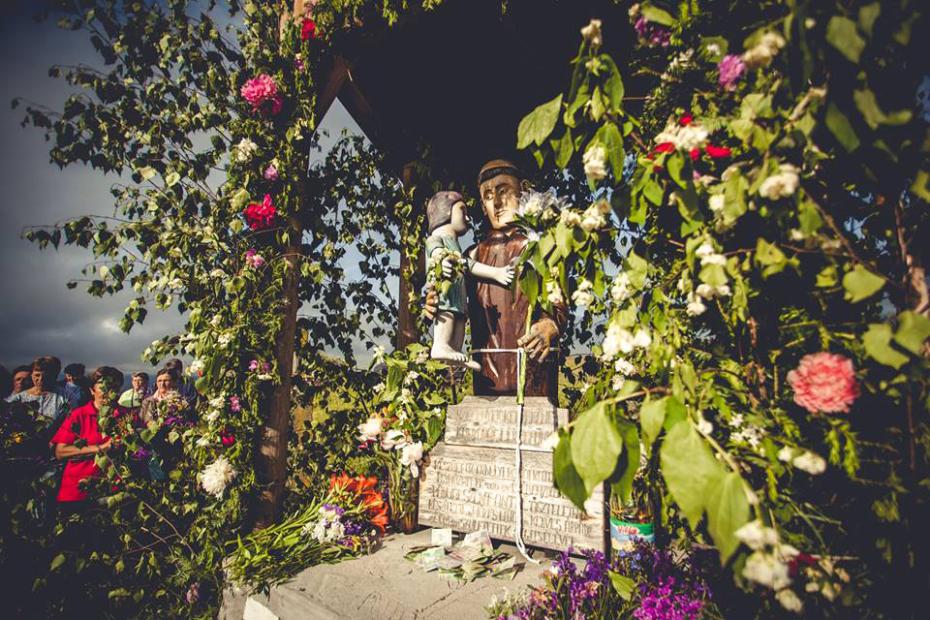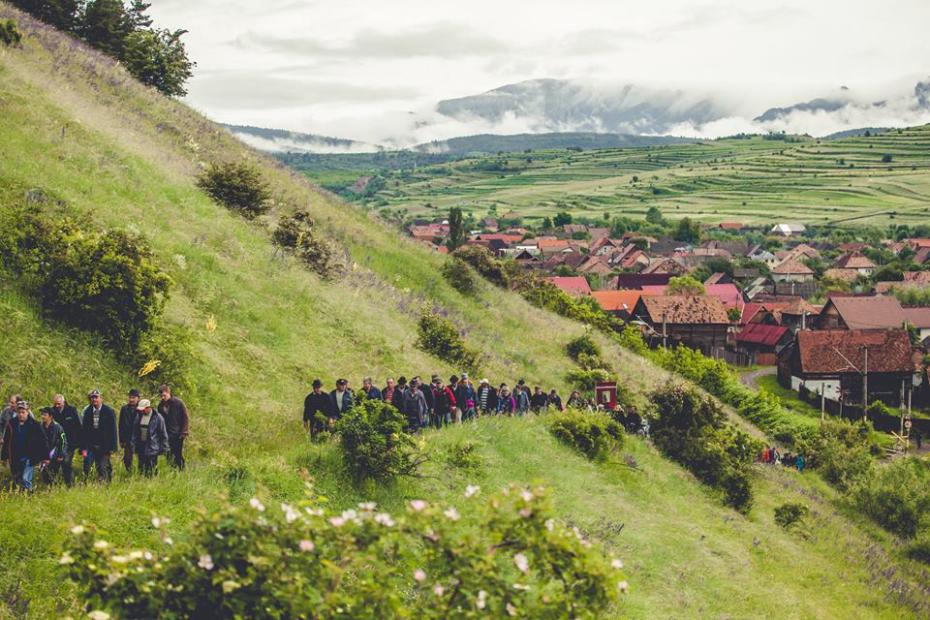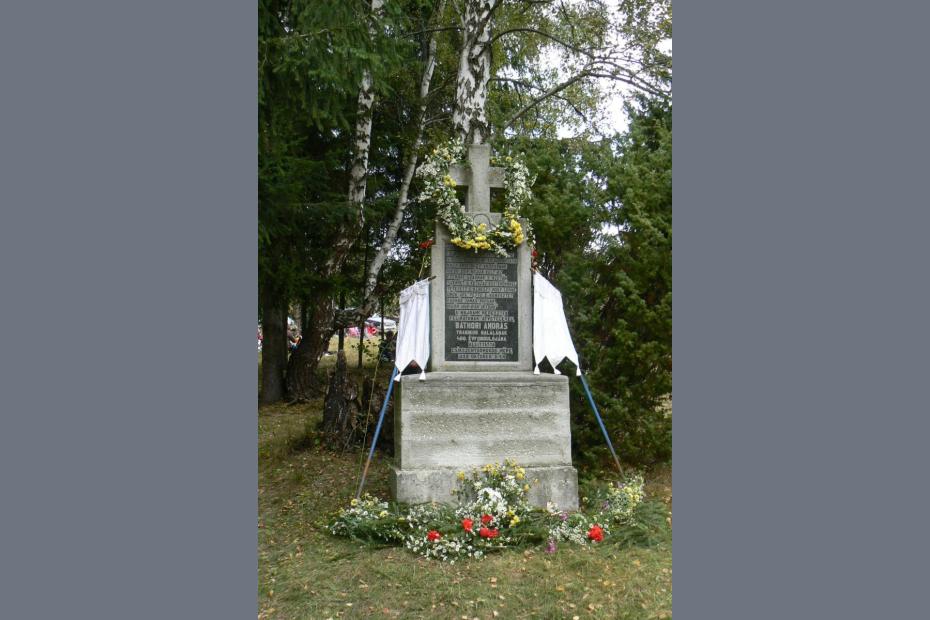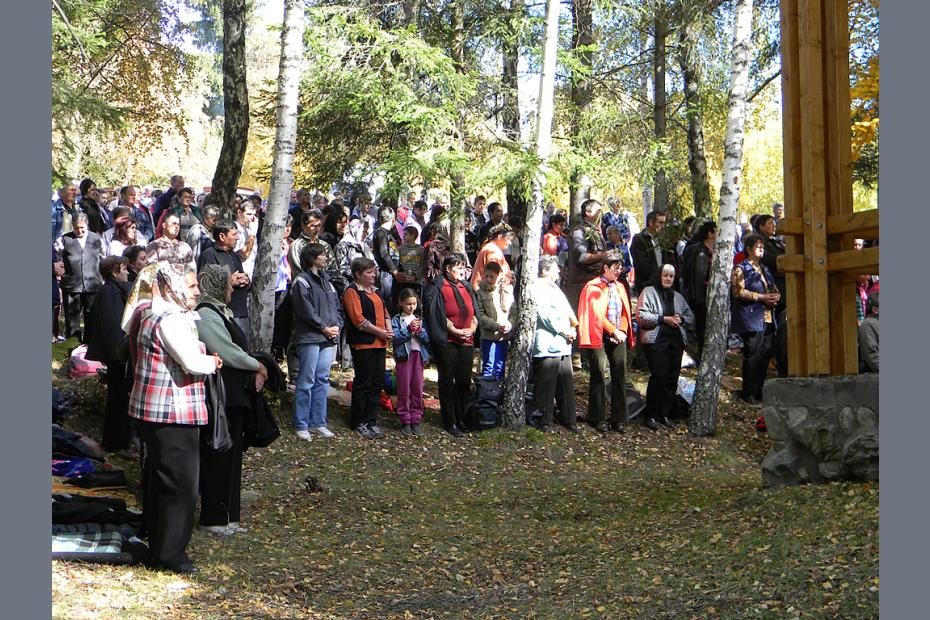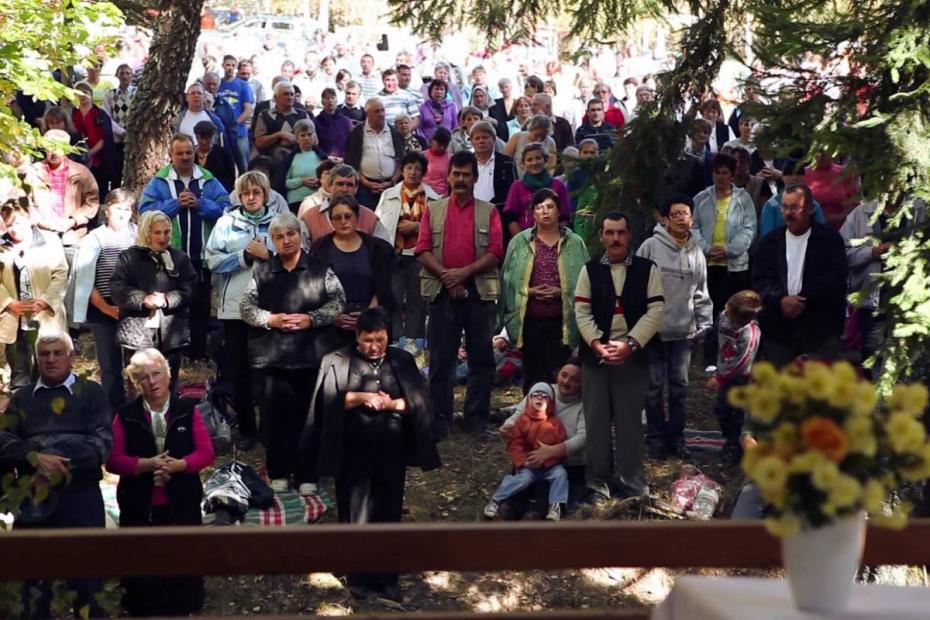The Whitsunday pilgrimage gathering in the village known as Csíksomlyó is one of the largest annual religious gatherings in Romania. Whitsunday is the Anglican name often used for the Christian festival of Pentecost, the seventh Sunday after Easter, which commemorates the descent of the Holy Spirit upon Christ's disciples. Pilgrims from nearby villages and carry banners with images of their village’s patron saint. Some of these groups travel several days, sleeping outside or in locals’ homes, to arrive by noon for the Whitsunday Mass held in a natural amphitheater. Others arrive by bus or train to join them along the procession route for Mass and an all-night vigil at the Franciscan church at Csíksomlyó.
In the summertime, every weekend one village or another in the predominantly Catholic Csík valley holds a village festival, or búcsú. This word for festival is the same as the word for a pilgrimage procession. As an outsider, the two events look quite different. The village festival is mostly an occasion for shopping, eating, and dancing. It takes place in the town center or a nearby field used for soccer games and other tournaments. The latter event involves a long procession to a location at some distance from a village. However, the use of the same word to refer to both events suggests that locals understand them to be fundamentally the same.
Two smaller pilgrimages take place in the north part of the Csík valley each year. The first, called “The Pilgrimage of Saint Anthony” takes place in the late spring. Setting out from the parish church in the northernmost village in the valley, a single line of pilgrims walk behind a velvet banner with a picture of Saint Anthony on the front. At the very front of the procession are a group of children, often 8, 9, or 10 years old, who rhythmically swing several heavy brass bells, setting the pace for the pilgrims following behind. Right behind is another banner featuring the Sacred Heart of Jesus and the Sacred Heart of Mary, two other popular devotional images in this region. The banner is heavy and the weight is increased by the tripod of stout wooden poles used to hold it up. Behind the banner walk a line of men followed by women and children. After about a two-hour walk, the procession reaches a grave marker on a nearby hillside. The stone is rough-hewn and moss-covered. It reads, “Jesus Was Laid in the Grave.” Pilgrims collect a type of purple wildflower that is in bloom at this time of year. A little ways after, the procession stops again at a covered wooden statue of Saint Anthony holding a child. Devotees leave the flowers they have collected and a pile of cash in front the statue.
A second pilgrimage, on the second Sunday in October, commemorates the murder of 16th-century Cardinal András Báthori. Locals remember this event as an embarrassing episode in their history. A stone marker at the site of the murder, which is also the end point of the pilgrimage procession, gives the names of the perpetrators. In interviews, families who share the same last name will deny that these men are their ancestors. The pilgrimage allows the village to remember this event collectively so that individual families can avoid personal blame for the crime.
The location of this event is much further away from the village than the statue of Saint Anthony. The dirt road leading up and through steep hills is too difficult to manage by car, so pilgrims travel by horse-drawn or tractor-drawn cart. A morning Mass is held in a glade shaded by fir trees, where pilgrims sit or recline on the ground before a rough stone altar. It can be very cold in the valley at this time of year; often there will be snow already on the peaks of nearby mountains. Before the Mass begins, pilgrims will gather wood for an open fire to warm themselves, and sometimes they will listen to the Mass while standing around these fires. Pilgrims will collect birch branches to take home with them, handing them over to older women and relatives who remained at home. Women will keep the branches for months, letting them dry and then leaving them on a shelf in the kitchen. They serve mainly as decoration, but, according to tradition, they were once used for medicinal purposes alongside flowers.
